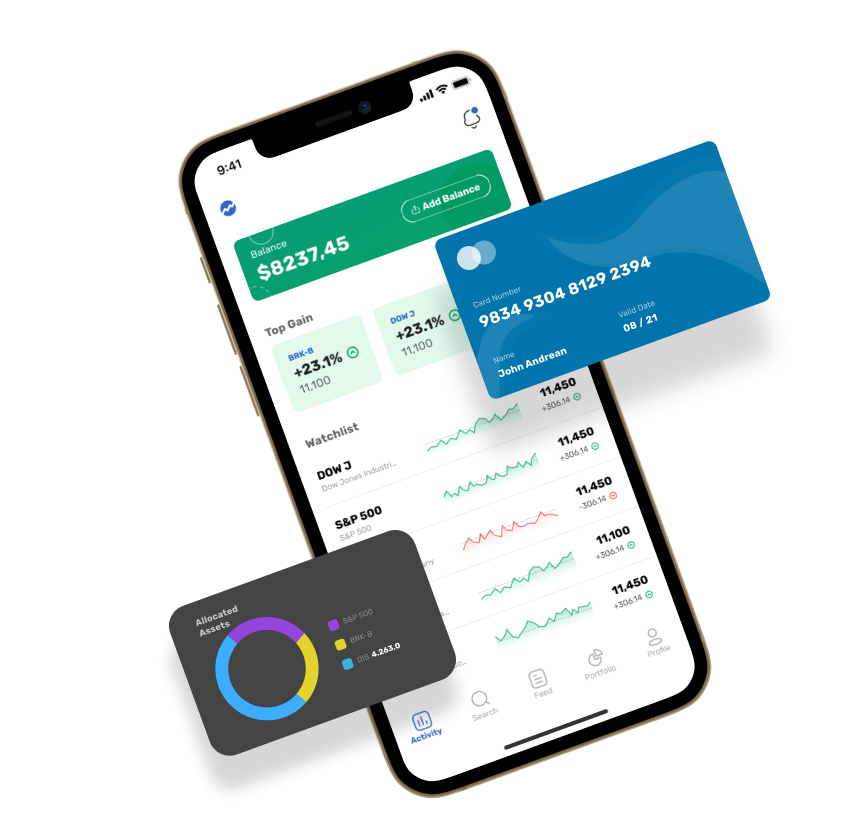20 Best Facts For Choosing AI Stock Prediction Sites
20 Best Facts For Choosing AI Stock Prediction Sites
Blog Article
Top 10 Suggestions For Evaluating Ai And Machine Learning Models Used By Ai Stock Predicting/Analyzing Trading Platforms
The AI and machine (ML) model utilized by the stock trading platforms and prediction platforms need to be evaluated to make sure that the information they provide are precise and reliable. They must also be relevant and useful. Overhyped or poorly designed models can lead flawed predictions, or even financial losses. We have compiled our top 10 recommendations on how to evaluate AI/ML-based platforms.
1. The model's approach and purpose
Determining the objective is important. Make sure the model was designed to allow for long-term investments or short-term trading.
Algorithm Transparency: Make sure that the platform discloses what types of algorithms they employ (e.g. regression, neural networks for decision trees, reinforcement-learning).
Customization: See whether the model is adjusted to your specific trading strategy or your risk tolerance.
2. Evaluate the Model Performance Metrics
Accuracy: Check the model's prediction accuracy. However, don't solely rely on this measure. It could be misleading on financial markets.
Recall and precision: Determine whether the model is able to detect true positives, e.g. correctly predicted price fluctuations.
Risk-adjusted gains: Determine whether the assumptions of the model can lead to profitable transactions, after taking into account the risk.
3. Check the model by Backtesting it
Historical performance: Backtest the model with historical data to determine how it would have performed in past market conditions.
Testing out-of-sample: Ensure that your model has been tested on data that it wasn't trained on to avoid overfitting.
Scenario analyses: Check the performance of your model in different market scenarios (e.g. bull markets, bear markets, high volatility).
4. Be sure to check for any overfitting
Overfitting signs: Look out for models that do exceptionally good on training data however, they perform poorly with unobserved data.
Methods for regularization: Make sure that the platform does not overfit by using regularization like L1/L2 and dropout.
Cross-validation. The platform must perform cross-validation to assess the generalizability of the model.
5. Review Feature Engineering
Relevant Features: Check to see whether the model includes relevant features. (e.g. volume, technical indicators, price and sentiment data).
Features selected: Select only those features which have statistical significance. Do not select redundant or irrelevant information.
Dynamic features updates: Check whether the model adjusts over time to new features or changes in market conditions.
6. Evaluate Model Explainability
Model Interpretability: The model should be able to provide clear explanations for its predictions.
Black-box models are not explainable Beware of systems that use complex models, such as deep neural networks.
User-friendly Insights: Verify that the platform offers an actionable information in a format traders are able to easily comprehend and utilize.
7. Assessing the model Adaptability
Market fluctuations: See if your model can adapt to market fluctuations (e.g. new laws, economic shifts or black-swan events).
Continuous learning: Determine whether the platform continually updates the model to include new data. This can boost performance.
Feedback loops. Make sure that your model takes into account feedback from users as well as real-world scenarios to improve.
8. Look for Bias & Fairness
Data biases: Ensure that the data for training are valid and free of biases.
Model bias - Determine if your platform actively monitors, and minimizes, biases within the model's predictions.
Fairness: Make sure that the model doesn't disadvantage or favor specific sectors, stocks or trading styles.
9. Calculate Computational Efficient
Speed: Check whether the model can make predictions in real-time or with minimal latency, especially for high-frequency trading.
Scalability: Find out if a platform can handle multiple users and large datasets without performance degradation.
Utilization of resources: Check if the model has been optimized to use computational resources effectively (e.g. GPU/TPU).
Review Transparency and Accountability
Model documentation: Verify that the platform offers complete documentation about the model's structure, its training process as well as its drawbacks.
Third-party validation: Find out whether the model has been independently validated or audited by a third entity.
Error Handling: Check if the platform is equipped with mechanisms that detect and correct errors in models or failures.
Bonus Tips
User reviews and case studies Review feedback from users to gain a better understanding of how the model performs in real-world situations.
Trial period: Test the model for free to test how accurate it is and how simple it is to use.
Customer support: Make sure the platform offers a solid support for technical or model issues.
With these suggestions, you can examine the AI/ML models used by stock prediction platforms and make sure that they are reliable, transparent, and aligned to your trading goals. Read the recommended ai for investing for site info including best ai for trading, best AI stock trading bot free, AI stock market, ai for investment, AI stock picker, investment ai, AI stock, investment ai, ai for trading, ai investment app and more.
Top 10 Tips For Evaluating The Risk Management Of AI stock Forecasting/Analyzing Trading Platforms
Risk management is a vital aspect of any AI stock predicting/analyzing trading platform to protect your capital and minimize potential losses. A platform with robust tools for risk management can assist you in navigating the volatile market and enable you to make educated choices. Here are 10 tips on how to assess the risk management capabilities of the platform.
1. Examining Stop-Loss or Take Profit Features
Customizable Levels: Be sure the platform allows you to define your own stop-loss levels as well as take-profit targets for strategies or trades.
Make sure you are able to use trailing stops. They will automatically adjust if market conditions shift towards your advantage.
If the platform offers stop-loss order guarantees that the position will be closed to the amount specified in markets that are volatile and you are assured that you will be able to trade successfully.
2. Useful Tools for Assessing Position Size
Fixed amount: Make sure that the platform you are using permits you to set positions according to a fixed amount.
Percentage of Portfolio: Find out whether it is feasible to set the position size as a percentage of your total portfolio so that you can manage risk proportionally.
Risk-reward-ratio: Determine if the platform allows users to set individual risk/reward ratios.
3. Look for Diversification Aid
Multi-asset trade: Make sure that the platform supports trading across multiple asset classes (e.g. stocks, ETFs, options or forex) to help diversify your portfolio.
Sector allocation: Verify whether the platform provides tools for monitoring and managing the exposure of sectors.
Diversification of geographical areas - Make sure that the platform allows trading on international markets. This can help reduce geographical risks.
4. Evaluation of Leverage and Margin Controls
Margin requirements: Ensure that the platform clearly discloses margin requirements for trading leveraged.
Find out the limits on leverage. This option to manage the risk you take.
Margin Calls: Ensure that the platform is sending timely notifications of margin calls in order to avoid account liquidation.
5. Assessment Risk Analytics and reporting
Risk metrics: Make sure whether your platform contains the most important risk-related metrics like Sharpe ratio, as well as Drawdown for your portfolio.
Scenario analysis: Find out whether the platform allows you to model various market scenarios in order to evaluate possible risks.
Performance reports: Find out whether you can obtain detailed performance reports through the platform. These reports include the risk-adjusted outcomes.
6. Check for Real-Time Risk Monitoring
Portfolio monitoring: Make sure that your platform provides real-time monitoring of the risk exposure to your portfolio.
Alerts: Check if you can receive real-time notifications for at risk (e.g. Stop-loss triggers or margin breaches).
Risk dashboards – Check to see if your platform comes with customized risk dashboards. This will give you an overview of the risks you're facing.
7. Tests of Backtesting and Stress Evaluation
Stress testing: Make sure that the platform permits you to stress test your portfolios or strategies in extreme market conditions.
Backtesting - See whether your platform permits you to test strategies back using historical information. This is an excellent way to measure the risks and determine the effectiveness of your strategy.
Monte Carlo Simulations: Check if the platform utilizes Monte Carlo simulations in order to analyze and predict the possible outcomes.
8. Risk Management Regulations: Assess your compliance
Regulatory compliance: Ensure the platform complies with relevant rules for risk management (e.g., MiFID II in Europe, Reg T in the U.S.).
Best execution: Verify whether the platform follows the most efficient execution method, which guarantees that trades are carried out at the most competitive price in order to minimize any slippage.
Transparency. Check that the platform is transparent and provides clear disclosures about potential risks.
9. Look for parameters controlled by the user.
Custom Risk Rules: Ensure that you can define custom rules for managing risk (e.g. a maximum daily loss, a maximum amount of tradeable position).
Automated risk controls: Verify that the platform is able to automatically enforce rules for risk management in accordance with your predefined parameters.
Manual overrides See for the possibility of manually overriding the risk management system in a situation of emergency.
User feedback from reviewers and case research
User reviews: Examine feedback from customers to evaluate the platform's efficiency in assessing risk.
Case studies Find case studies or testimonials that demonstrate the ability of the platform to manage risk.
Forums for communities Find out if there is a vibrant community of traders who share tips and strategies for managing risk.
Bonus Tips
Free Trial: Try out the platform's features for risk management in real situations.
Customer support: Ensure the platform provides a solid support in relation to risk management concerns or questions.
Educational resources: Find out if there are any educational resources on the best practices for managing risk.
These guidelines will allow you to determine the risk management capabilities of AI software for analyzing and predicting stocks. So, you'll be able to pick a platform that safeguards your capital and minimizes potential losses. The use of robust risk management tools is crucial to navigate unstable markets and achieving long-term trading success. Follow the recommended straight from the source for best AI stocks for blog info including best ai trading platform, ai trading tool, best ai penny stocks, free AI stock picker, best AI stocks to buy now, free ai tool for stock market india, AI stock investing, ai options, AI stock predictions, AI stock investing and more.